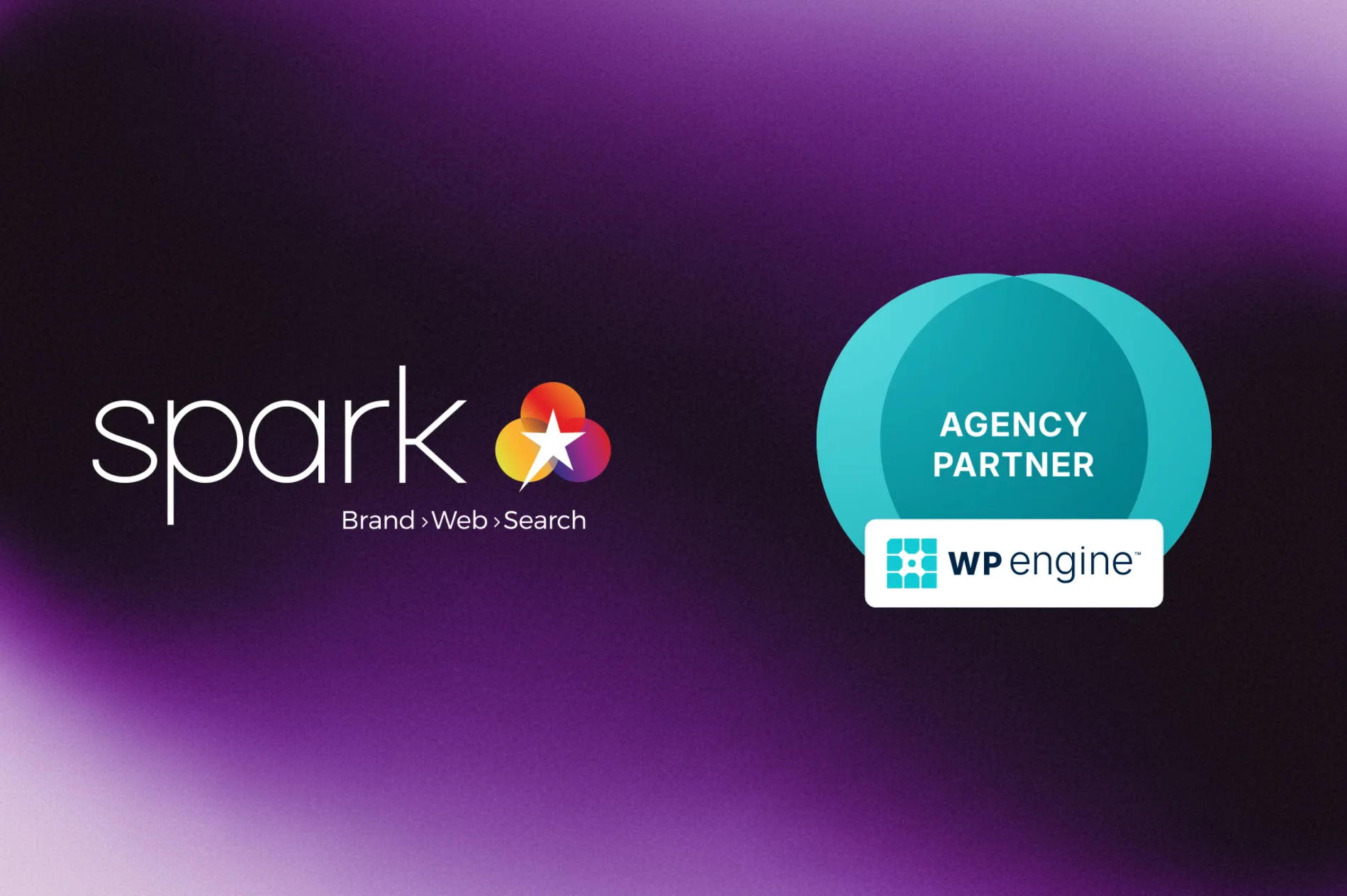TL;DR
Design and SEO work best when they’re built together, not separately. A website that’s fast, structured, and mobile-first ranks higher because it delivers a smoother experience for users and search engines alike.
This guide covers ten key website design elements that directly influence SEO — from site structure and page speed to accessibility and platform choice — with practical insights for Australian businesses aiming to improve their online visibility in 2025.
Search engines notice everything your visitors do. How long they stay, what they click, how quickly a page loads. Every design choice you make quietly influences those signals.
If your site feels clunky or confusing, users leave and Google follows their lead. When design supports SEO from the start, you create a website that performs as well as it looks.
This guide walks through ten website design elements that directly affect search rankings, with practical insights for Australian businesses building or improving their web design and SEO in 2025.
Why design and SEO must work together
Strong visuals can capture attention, but without SEO, few people will ever see them. On the other hand, technical SEO alone can’t hold an audience if the experience feels dull or difficult to use. A website only performs at its best when design and SEO move in the same direction.
They need to work together because both influence how:
- users experience and interact with your website
- search engines crawl and understand your content
- pages load and perform across different devices
- trust and credibility are built through design and structure
When these two disciplines operate in isolation, results suffer. Designers often prioritise creativity and layout, while SEO specialists focus on performance and structure. The outcome is usually a compromise that looks good but fails to convert, or ranks well but feels uninspired.
Integrating SEO principles into the design process prevents this divide. It leads to cleaner code, faster pages, and experiences that both users and search engines value. For Australian businesses, this alignment translates directly to stronger visibility and sustained organic growth.
So, what are the design elements that make that possible?
1. Site structure and crawlability
Think of your site’s structure as the map that guides both users and search engines. A clear, well-organised layout helps people find what they need faster and makes it easier for Google to understand which pages matter most.
A strong structure means:
- Visitors can reach important pages in just a few clicks.
- Search engines can crawl your site efficiently without missing key content.
- Each page has a clear purpose and supports the bigger picture of your business.
One simple approach:
Use a hub-and-spoke model where one main page (the hub) links to several related pages (the spokes). For example, a construction company could have a central “Services” page leading to subpages like “Civil Works,” “Electrical,” and “Maintenance.” This setup keeps information organised and builds topic relevance that search engines can recognise.
To support this structure:
- Add internal links that connect related pages naturally.
- Use breadcrumbs to show where visitors are on your site.
- Keep an updated XML sitemap so Google can find your pages easily.
- Configure your robots.txt file to prevent crawlers from wasting time on admin or duplicate content.
When navigation feels natural to users, it also becomes easier for search engines to understand your site. That’s how structure turns from a technical detail into a real driver of visibility.
2. Mobile-first responsive design
Most people now visit websites from their phones, and Google knows it. That’s why it evaluates your site based on the mobile version first, not the desktop one. If your mobile experience feels slow or cluttered, your rankings will drop, no matter how polished your desktop layout looks.
A mobile-first approach simply means designing for smaller screens first, then scaling up. It prioritises speed, readability, and effortless navigation. When users can browse smoothly on mobile, that same experience naturally translates to other devices.
What makes a mobile-first site work:
- Flexible layout: Content adjusts automatically to different screen sizes without breaking the design.
- Readable text: Fonts are large enough to scan easily without zooming.
- Tappable buttons: Navigation and call-to-action buttons have enough spacing to prevent accidental clicks.
- Fast loading: Images are compressed, and code is streamlined so pages open quickly on mobile data.
You can quickly test your site’s performance using Google’s Mobile-Friendly Test. If it’s hard to navigate, slow to load, or awkward to scroll on a phone, it’s time for a redesign that puts mobile users first.
3. Page speed and Core Web Vitals
How fast your website loads shapes every part of the user experience, and it’s one of the strongest ranking signals Google tracks. A few extra seconds can make the difference between a visitor staying or leaving, and search engines measure that behaviour closely.
Core Web Vitals are Google’s way of measuring how users experience your site. They focus on three key factors:
- Largest Contentful Paint (LCP): How long it takes for the main content to appear on screen. Aim for under 2.5 seconds.
- First Input Delay (FID): The time between when a user clicks or taps and when the site responds. Keep it below 100 milliseconds.
- Cumulative Layout Shift (CLS): How stable your layout is as it loads. If elements jump around, it’s a problem. Keep this score under 0.1.
What slows pages down most often:
- Oversized or unoptimised images.
- Too many plugins or scripts are running in the background.
- Cheap or distant hosting that increases load time for Australian visitors.
Quick ways to improve speed:
- Compress images using modern formats like WebP.
- Minimise plugins and heavy animations.
- Use Australian-based hosting or a content delivery network (CDN) to serve data faster.
When your site loads quickly, people stay longer, conversions improve, and Google rewards that performance with better visibility.
4. Semantic HTML and accessibility
Search engines read your website differently from how users see it. They rely on structure and tags to understand what each part of your page means. That’s where semantic HTML comes in — it gives context and meaning to your content.
When your site uses proper HTML structure, it helps both people and search engines navigate it smoothly. It also improves accessibility for users who rely on screen readers or other assistive tools.
Here’s what to keep in mind:
- Use one main heading (H1) to define the page’s topic. Subheadings (H2–H6) should follow a clear order to show hierarchy.
- Apply semantic elements like <header>, <nav>, <main>, and <footer> to tell search engines how your content is organised.
- Add structured data (for example, LocalBusiness schema) so Google can display rich results like your business hours, reviews, or service areas.
- Ensure accessibility by providing descriptive alt text for images and using logical heading sequences that support screen readers.
Accessibility and SEO often overlap. A site that’s easy for everyone to use tends to perform better in search results too. It’s not just about compliance — it’s about creating a clear, understandable experience for all users and search engines alike.
5. Content readability and user experience
Even the most optimised website will struggle if the content is hard to read. Readability affects how long people stay on your page, how much they engage, and whether they trust your message — all of which influence SEO performance.
Good design and content work together to guide readers naturally through each page. When visitors can scan, understand, and act quickly, Google sees it as a positive user experience.
Key elements of readable content:
- Font choice and size: Use clean, easy-to-read fonts with a minimum of 16px for body text.
- Line spacing and contrast: Proper spacing and colour contrast make reading comfortable on any device.
- Short paragraphs: Two to three sentences per paragraph help readers process information faster.
- White space: Empty space isn’t wasted; it helps direct focus and reduces visual clutter.
- Visual hierarchy: Use headings, bold text, and callouts to highlight important points and guide the eye.
When your content feels effortless to read, users stay longer and interact more — and those signals tell Google your site deserves to be seen.
6. Image and multimedia optimisation
Visuals make a website engaging, but they also affect how well it performs in search. Large, unoptimised files can slow loading times, and missing image details can make your content harder for Google to understand.
Optimising images and multimedia helps your pages load faster, improves accessibility, and gives search engines more context about what’s on the page.
Simple ways to optimise visual content:
- Use descriptive filenames. Replace generic names like “IMG_001.jpg” with something meaningful such as “solar-panel-installation-sydney.jpg.”
- Write accurate alt text. Describe what’s in the image naturally and briefly so search engines and visually impaired users can interpret it.
- Compress image sizes. Use formats like WebP to reduce file size without losing quality.
- Add lazy loading. Load images only when users scroll to them so the initial page opens faster.
- Embed videos carefully. Hosting on platforms like YouTube or Vimeo saves bandwidth and improves performance.
Good image optimisation keeps your site fast, accessible, and easy for search engines to understand — all key factors that influence visibility.
7. Navigation design and internal links
Your website’s navigation is what connects every part of your content. It should help visitors find what they need quickly while giving search engines a clear path to follow. A simple, structured menu can improve both user experience and SEO more than most people realise.
Good navigation does three things:
- Guides visitors to the right information with as few clicks as possible.
- Helps search engines crawl pages and understand your site hierarchy.
- Distributes ranking authority evenly across key pages.
Best practices for navigation:
- Keep menus simple. A clear top menu with 5–7 main items is easier to use and crawl than a complex dropdown.
- Use descriptive labels. “Services” or “Projects” tell visitors and search engines exactly what to expect.
- Add breadcrumbs. These show where users are on your site and help search engines understand relationships between pages.
- Link key pages in the footer. Include your main services or location pages there — it reinforces visibility without cluttering your primary menu.
When your navigation feels natural, visitors stay longer and explore more pages. That engagement tells Google your site is valuable and worth ranking higher.
8. Metadata and on-page SEO elements
Metadata may not be visible to users, but it strongly influences how your site appears in search results. Well-written titles and descriptions can boost click-through rates, while missing or duplicate tags can hold your rankings back.
Key on-page elements to focus on:
- Title tags: Keep them under 60 characters so they display fully in search results. Include your main keyword and, where relevant, a location or brand name.
Example: “Web Design Sydney | Custom Websites for Australian Businesses.” - Meta descriptions: Aim for 155–160 characters. Write them like short ad copy that encourages clicks.
Example: “Professional web design in Sydney. Mobile-friendly, SEO-ready websites built for growth.” - Header tags: Use headings (H1, H2, H3) to break up content and highlight important sections. They help both readers and search engines understand your structure.
- Open Graph tags: Control how your pages appear when shared on social media by setting a clear title, description, and image.
Strong metadata helps your content stand out before users even visit your site. It’s one of the simplest yet most effective ways to improve visibility and engagement.
9. Indexable and secure content
Search engines can only rank what they can access. If your most valuable content sits behind scripts, pop-ups, or technical barriers, Google might never see it. Making your site indexable ensures everything important is visible to both users and crawlers.
Keep your content easy to access:
- Avoid heavy JavaScript rendering. Some elements built entirely with JavaScript may not load for search engines. Wherever possible, make sure the essential text and images are part of your main HTML.
- Use plain text for key details. Don’t hide information like product descriptions, prices, or contact details inside images.
- Add fallback links or pagination. If your site uses “Load More” or infinite scroll, give crawlers an alternative way to reach those pages.
Security also plays a part in SEO. Google prioritises safe, trusted websites, and users do the same.
To keep your site secure and credible:
- Use HTTPS. Install an SSL certificate so browsers recognise your site as secure.
- Check for mixed content. Make sure all images, scripts, and styles load over HTTPS.
- Show trust signals. Add your ABN, contact details, or certifications to build confidence with Australian visitors.
An indexable, secure website doesn’t just perform better in search results — it shows visitors that your business is legitimate, professional, and safe to engage with.
10. Design platform considerations
Your choice of platform affects how much control you have over SEO and site performance. Each option comes with its own strengths and trade-offs, so the best choice depends on your business goals, technical skills, and budget.
WordPress
- Flexible and highly customisable.
- Supports advanced SEO plugins such as Yoast or Rank Math.
- Works best for content-heavy or service-based websites.
- Needs regular maintenance to stay secure and fast.
Shopify
- Reliable for e-commerce and easy to manage without technical skills.
- Has built-in SEO features, though URL structures are less customisable.
- Works well for online stores that need fast setup and smooth checkout experiences.
Custom development
- Offers full design and SEO freedom.
- Ideal for large businesses or those with complex functionality.
- Higher cost and requires ongoing development support.
Whatever platform you choose, build with SEO in mind from the start. A well-structured, fast, and mobile-friendly site will always perform better than one that relies on fixes later.
Key takeaways
A high-performing website isn’t built by chance. It comes from planning, collaboration, and attention to detail across every part of design and development.
When design and SEO work together, the results are clear: faster load times, better usability, and stronger search visibility. The same applies whether you’re designing, managing, or promoting a site.
If you’re a business owner
Focus on the big picture. Choose the right platform, invest in Australian hosting, and think mobile-first. A well-built site is an asset that keeps growing in value.
If you’re a designer or developer
Design with SEO in mind from the start. Keep layouts simple, structure clear, and code clean. Every creative choice should support usability and performance.
If you’re a digital marketer
Treat the website as your foundation. Monitor Core Web Vitals, track engagement, and make sure technical updates don’t undo SEO progress.
When each role aligns around the same goal — a fast, intuitive, and search-friendly website — everything else falls into place.
Conclusion
Strong SEO doesn’t start after a website is built. It starts with the design itself. Every layout choice, navigation flow, and line of code affects how users and search engines experience your site.
When design and SEO work hand in hand, you create a platform that’s fast, accessible, and built for growth. It performs well because it’s built with purpose — not just to look good, but to deliver results.
If you’re planning a new website or refreshing an old one, start by reviewing these ten elements. Optimise your structure, improve your speed, and design with usability at the centre. Those improvements compound over time, turning visibility into credibility and traffic into real business outcomes.
Ready to take the next step? Get in touch with our team to audit your site and uncover simple ways to improve performance and visibility.




